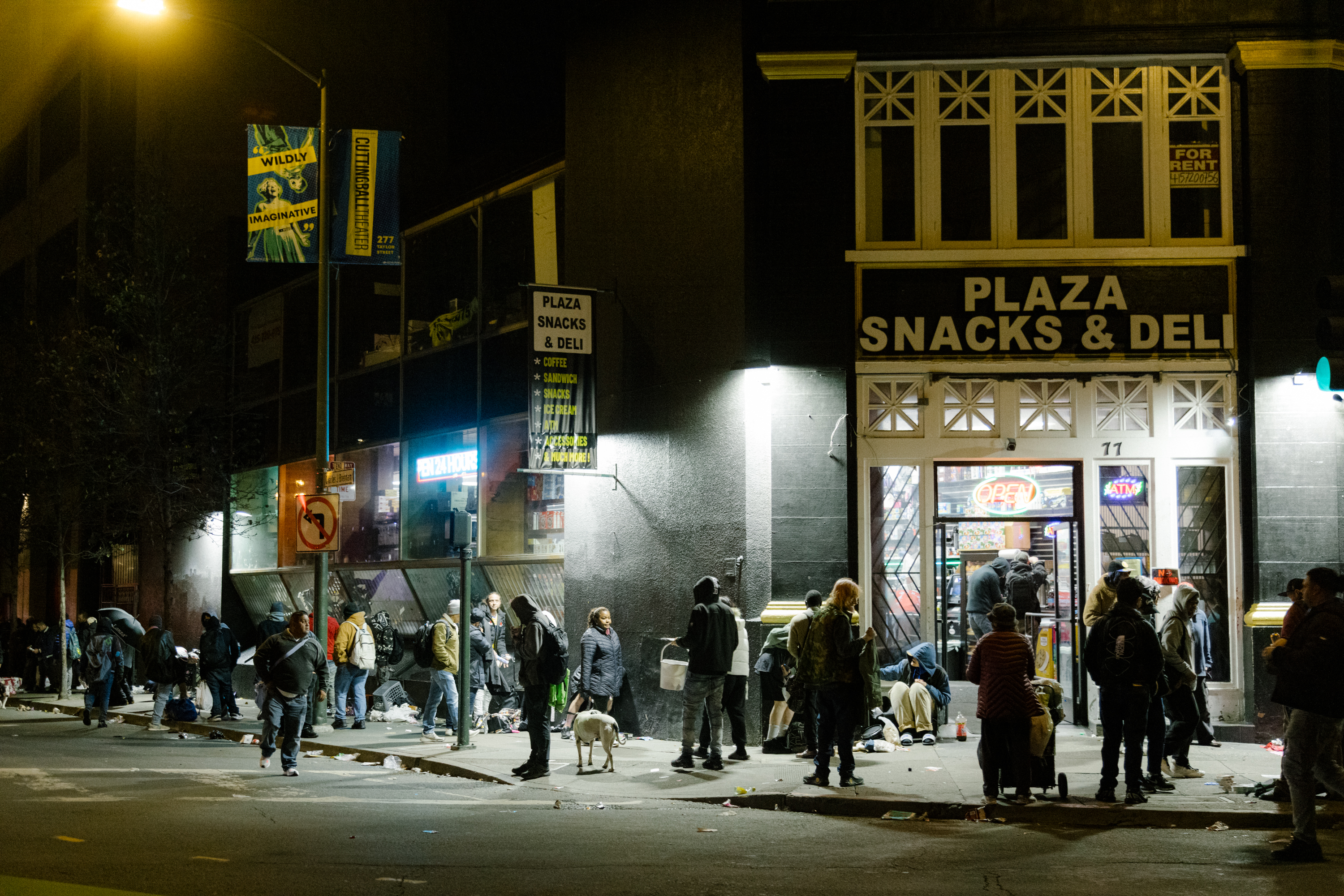New data released by the Mayor’s Office on Thursday shows that a large percentage of people cited for drug use hail from outside of San Francisco, a figure that appears to support the long-standing suspicion that the city is a tourist destination for people who use illicit substances.
The release of the data coincides with the impending March 5 primary election, where Mayor London Breed is pushing for Prop. F, a controversial ballot measure that would create stricter rules surrounding welfare payments and illegal substance use. The measure is seeing significant support from a populace largely fed up with public drug use, according to polls.
Mayor Breed has recently called for more aggressive law enforcement action against drug use and dealing in the city and, this week, offered her strongest-ever condemnation of harm reduction, a public health strategy that includes needle exchanges and overdose prevention. Public pressure has mounted more recently to address the city’s fentanyl crisis, which is killing hundreds of people each year.
The data set, which spans from March 2023 to this month, reveals that 47% of the 718 individuals cited for drug use by police come from counties outside of San Francisco or declined to answer.
“These numbers serve as proof that we must continue doubling down our efforts to shut down our drug markets that are attracting people to come here,” said Breed in a statement on Thursday.
The data also suggests that a sizable number of those who aren’t from San Francisco, a little less than 50 individuals, are also receiving cash assistance from the city—a violation of the welfare program’s policy.
The Human Services Agency, which oversees the County Adult Assistance Program (CAAP), said Thursday that certain individuals had applied through “fraudulent documents” and have since been removed from it.
“It stands to reason that there is some drug tourism going on,” said Human Services Agency Executive Director Trent Rhorer in an interview reflecting on the data. Rhorer said that for individuals to receive CAAP benefits, they must show proof of residency through forms like lease agreements or letters from those who can vouch for the applicant.
“In this day and age with technology, it’s not so hard to fake those documents,” he said. Rhorer said his agency is currently investigating the roughly 50 cases of fraud and individuals will be brought in-person to show proof of residency.
Serving over 5,000 low-income individuals, the CAAP program provides monthly payments of $712 on an EBT card which individuals can withdraw cash from through an ATM. The amount is the highest in the state and more than twice the statewide average, according to Rhorer.
Breed’s Prop. F would allow the city to screen single, adult recipients of cash welfare for drug addiction if they are reasonably believed to be using illegal substances. For people found to be addicted to illegal drugs, the measure would require that they enroll in some form of treatment to continue receiving cash aid.
On Thursday, some critics of the mayor’s recent shift in combating drug use said the figures were unimportant in the face of overdose deaths.
“It is an utter distraction from saving lives right now,” said Treatment on Demand Coalition’s Sara Shortt. “I can’t understand, given the enormity of this crisis, why people in City Hall would be looking at where people live and where they’re from and who they are. Rather than simply looking at that we have over 800 deaths (from overdoses last year) and rolling up their sleeves to get solutions done to reduce those deaths.”
